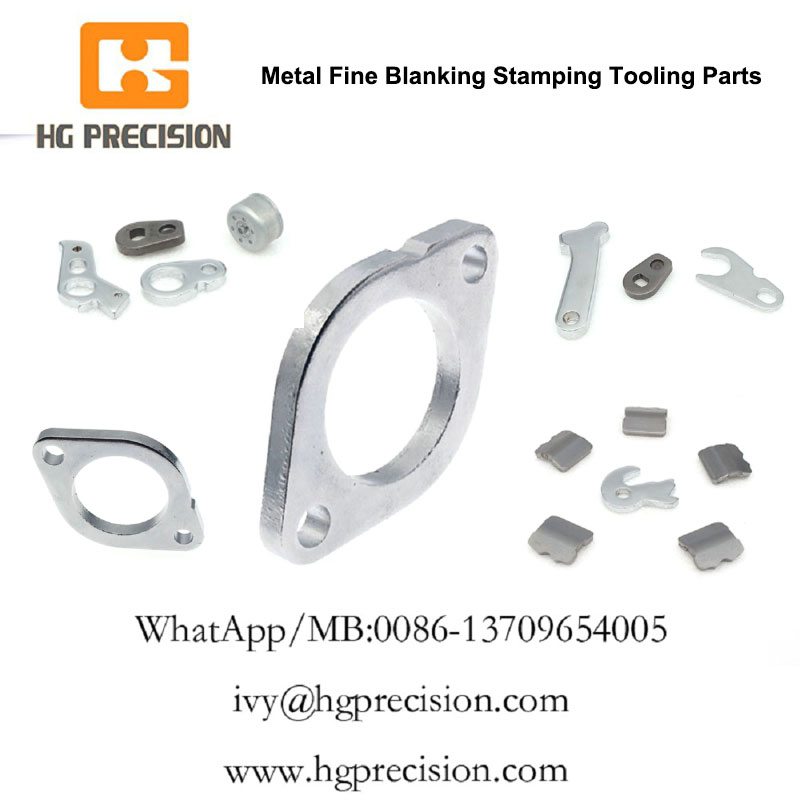Fine Blanking Stamping is used in several industries, from manufacturing household appliances to automotive OEMs.HG Precision focus on producing Metal Fine Blanking Stamping,Fine Blanking Stamping Tooling,Fine Blanking Stamping Tooling Parts.Low cost,Customized and fast shipping.Order now!
HG Precision Metal Fine Blanking Stamping offers a considerable cost advantage,and products developed with the metal stamping process are usually stronger and most durable than those made by other metal forming processes such as forging or die casting.Fine Blanking Stamping Tooling Parts have been widely used in many fields, such as automobile, motorcycle, consumer electronics, electronics industry,etc.

Product Details
Product name:HG Precision Fine Blanking Stamping Manufacturing In China
Material: aluminium, Brass, Copper, and carbon, Alloy and Stainless Steels
Sheet Thickness: 0.05mm-10.0mm
Schedule: on stock is only 2-3days.Customized is basing on the quantity.
MOQ:1 Piece
Package: standard mold parts package.
Current customer: Japanese, USA, India, Indonesia, Malaysia, Vietnam, Sri Lanka, Germany, Slovakia, Spain, Mexico. Turkey, Iran and so on.
Delivery way:DHL,UPS,EMS,FEDEX,TNT...As some standard mold spare parts weight is heavy, to save cost, the special express will be arranged per customer confirmed.
HG Precision Metal Fine Blanking Stamping offers a considerable cost advantage,and products developed with the metal stamping process are usually stronger and most durable than those made by other metal forming processes such as forging or die casting.Fine Blanking Stamping Tooling Parts have been widely used in many fields, such as automobile, motorcycle, consumer electronics, electronics industry,etc.

Product Details
Product name:HG Precision Fine Blanking Stamping Manufacturing In China
Material: aluminium, Brass, Copper, and carbon, Alloy and Stainless Steels
Sheet Thickness: 0.05mm-10.0mm
Schedule: on stock is only 2-3days.Customized is basing on the quantity.
MOQ:1 Piece
Package: standard mold parts package.
Current customer: Japanese, USA, India, Indonesia, Malaysia, Vietnam, Sri Lanka, Germany, Slovakia, Spain, Mexico. Turkey, Iran and so on.
Delivery way:DHL,UPS,EMS,FEDEX,TNT...As some standard mold spare parts weight is heavy, to save cost, the special express will be arranged per customer confirmed.
评论
发表评论